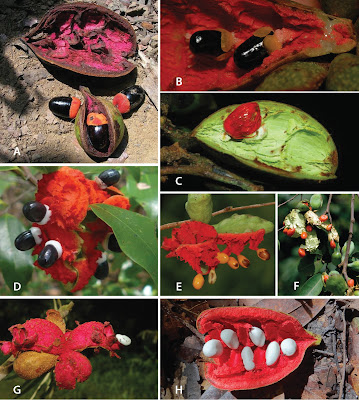 |
| Shirerpeton isajii
Matsumoto & Evans, 2018
llustration: Takumi Yamamoto
|
Abstract
Albanerpetontids are an enigmatic fossil amphibian group known from deposits of Middle Jurassic to Pliocene age. The oldest and youngest records are from Europe, but the group appeared in North America in the late Early Cretaceous and radiated there during the Late Cretaceous. Until now, the Asian record has been limited to fragmentary specimens from the Late Cretaceous of Uzbekistan. This led to speculation that albanerpetontids migrated into eastern Asia from North America in the Albian to Cenomanian interval via the Beringian land bridge. However, here we describe albanerpetontid specimens from the Lower Cretaceous Kuwajima Formation of Japan, a record that predates their first known occurrence in North America. One specimen, an association of skull and postcranial bones from a single small individual, permits the diagnosis of a new taxon. High Resolution X-ray Computed Microtomography has revealed previously unrecorded features of albanerpetontid skull morphology in three dimensions, including the presence of a supraoccipital and epipterygoids, neither of which occurs in any known lissamphibian. The placement of this new taxon within the current phylogenetic framework for Albanerpetontidae is complicated by a limited overlap of comparable elements, most notably the non-preservation of the premaxillae in the Japanese taxon. Nonetheless, phylogenetic analysis places the new taxon closer to Albanerpeton than to Anoualerpeton, Celtedens, or Wesserpeton, although Bootstrap support values are weak. The results also question the monophyly of Albanerpeton as currently defined.
Lissamphibia
Albanerpetontidae
Shirerpeton gen. nov.
Etymology: From the Japanese Shiro, white, partly for Shiramine, the type locality, but also because the family name, Albanerpetontidae, derives from the original French locality of La Grive-Saint-Alban, with Alba/Alban (Latin) meaning white.
Shirerpeton isajii sp. nov.
Holotype: Shiramine Board of Education Ishikawa Prefecture, SBEI 2459, a small block bearing most of a disarticulated but associated skull with some postcranial elements (Fig 2A). The specimen is housed in the Shiramine Institute of Paleontology, Hakusan Board of Education, Hakusan City, Ishikawa Prefecture, Japan.
Etymology: Species name honours Dr Shinji Isaji, Chiba Prefecture Museum, Japan, for his longstanding work on the fossils, geology, and palaeoenvironment of the Kuwajima Formation.
....
 |
| Fig 41. Skull roofing bones in albanerpetontids (not to scale). A, Shirerpeton isajii; B, Celtedens ibericus; C, Albanerpeton inexpectatum; D, Albanerpeton pannonicum. |
Conclusions:
The recovery of the new Japanese specimens sheds new light on albanerpetontid morphology and biogeography, but raises as many questions as it resolves. There is clearly much more to discover about these enigmatic little tetrapods, in terms of their morphology, relationships, and evolutionary history. Recent discoveries have demonstrated that the group had a more extensive temporal and geographical distribution in Asia than previously understood. Awareness of this among researchers may lead to further discoveries.
Ryoko Matsumoto and Susan E. Evans. 2018. The First Record of Albanerpetontid Amphibians (Amphibia: Albanerpetontidae) from East Asia. PLoS ONE. 13(1); e0189767. DOI: 10.1371/journal.pone.0189767
researchgate.net/publication/322238394_The_first_record_of_albanerpetontid_amphibians_from_East_Asia
化石:1.3億年前、新種の両生類 石川で3個体分 - 毎日新聞 mainichi.jp/articles/20180407/ddn/012/040/020000c
Amphibian fossil in Ishikawa recognized as new species: The Asahi Shimbun asahi.com/ajw/articles/AJ201804210005.html











































